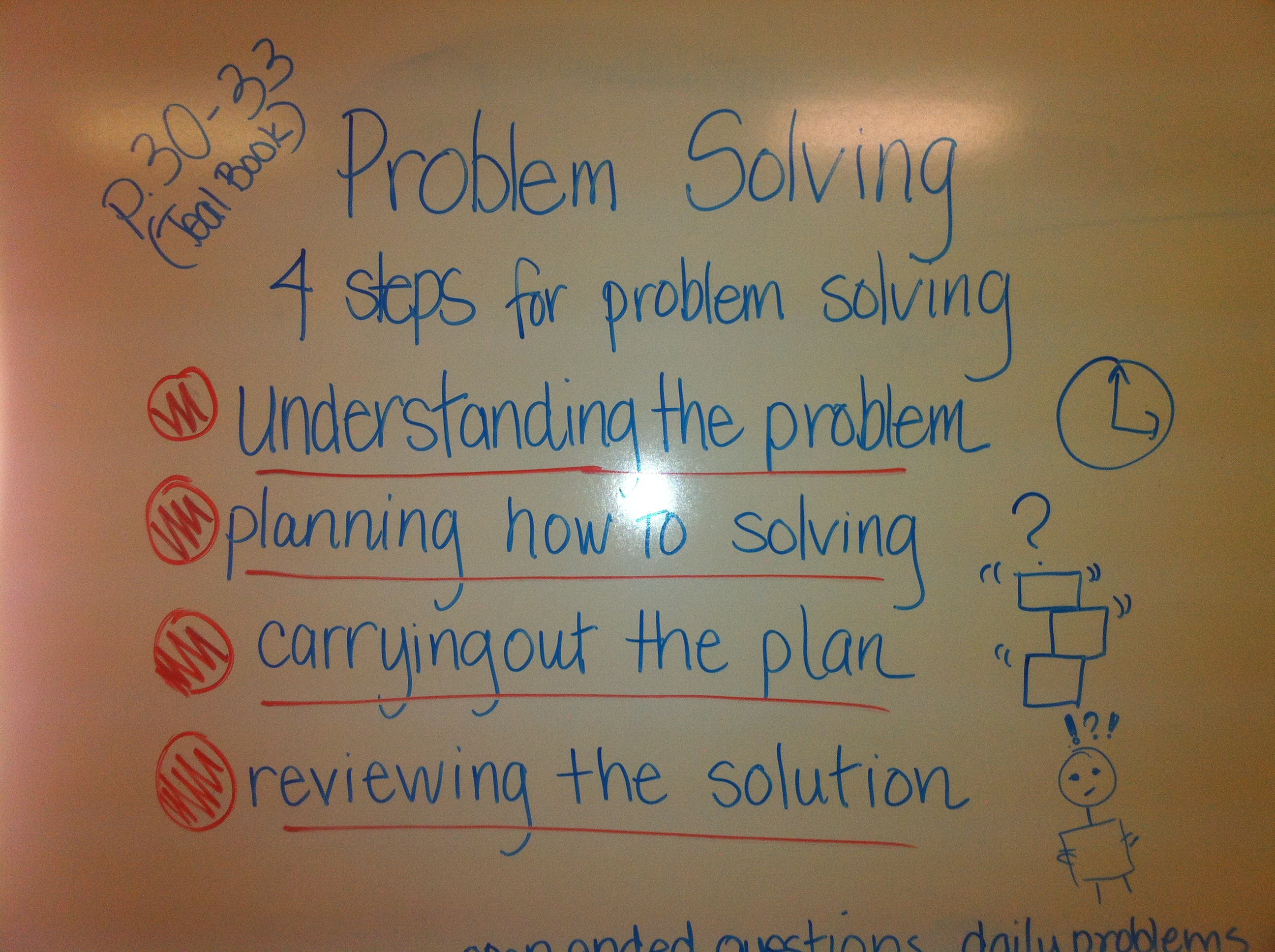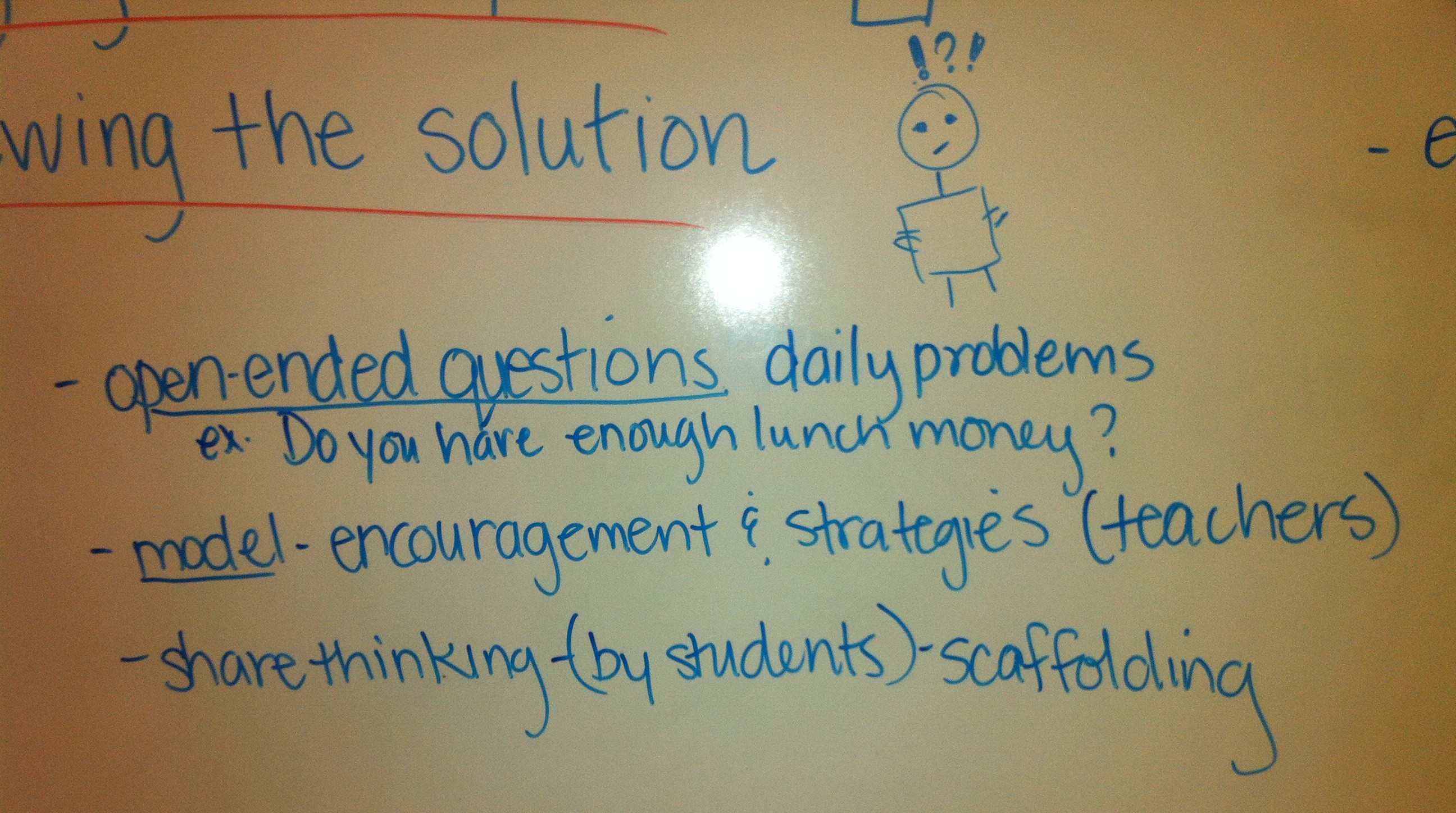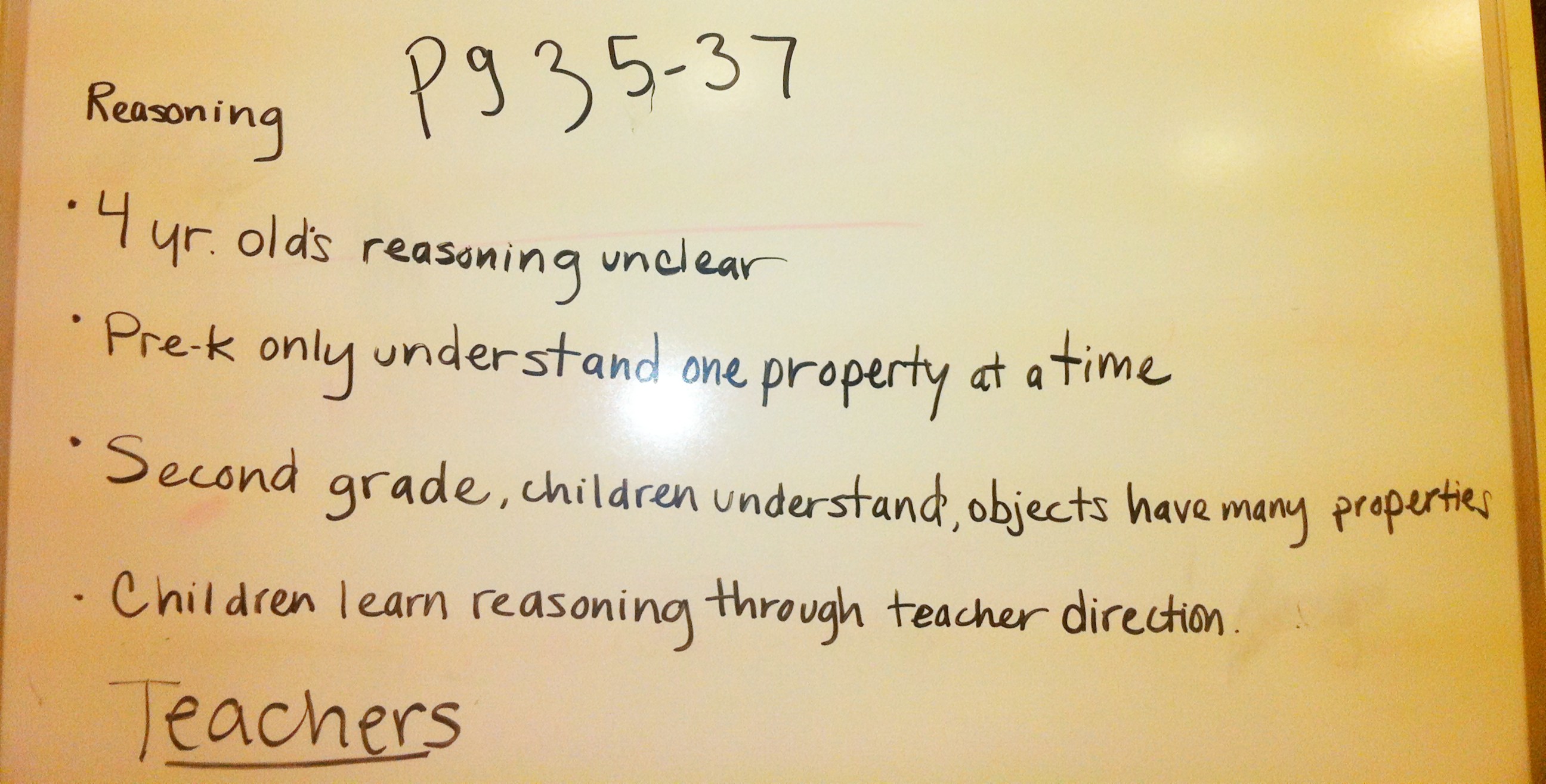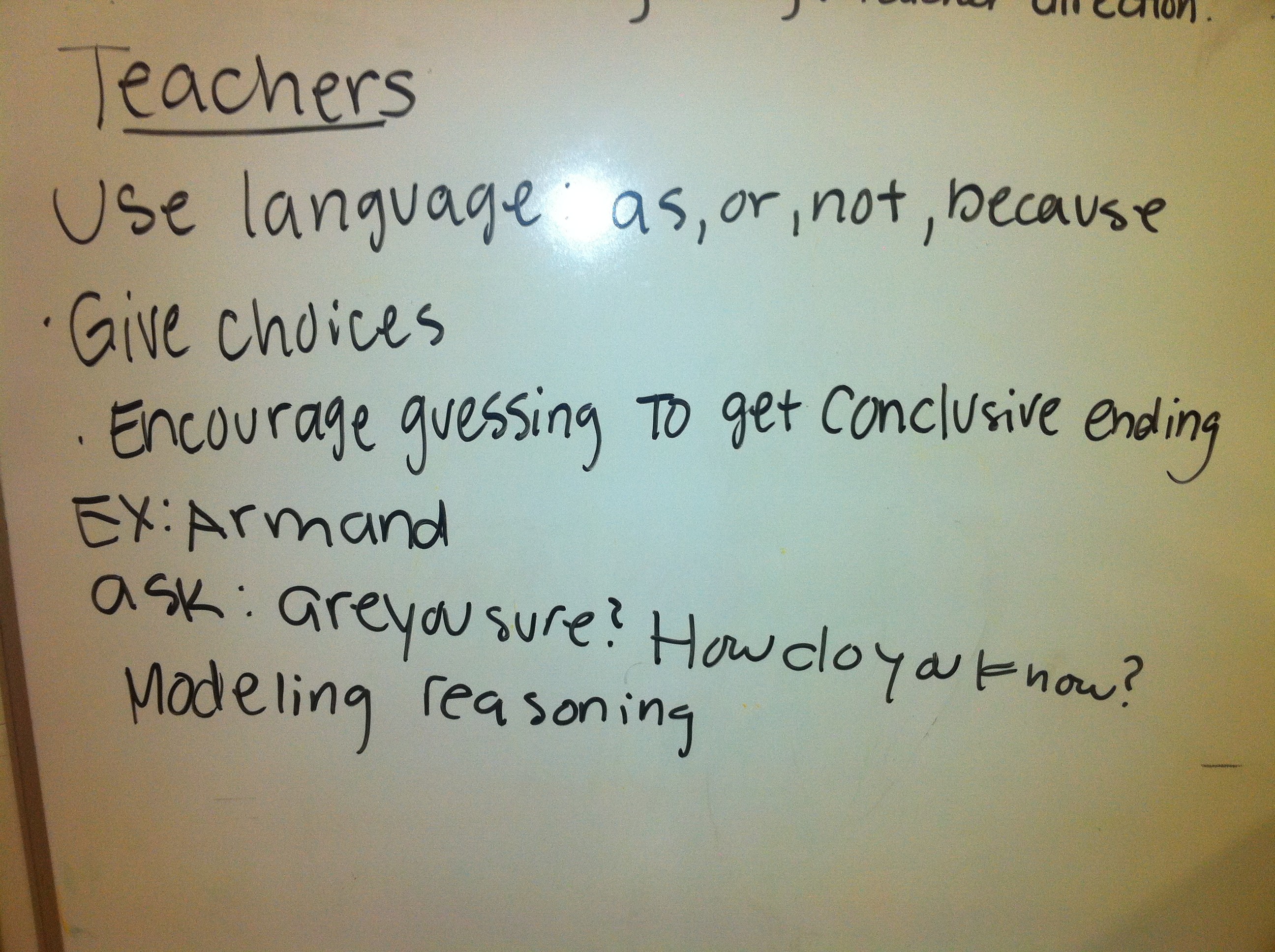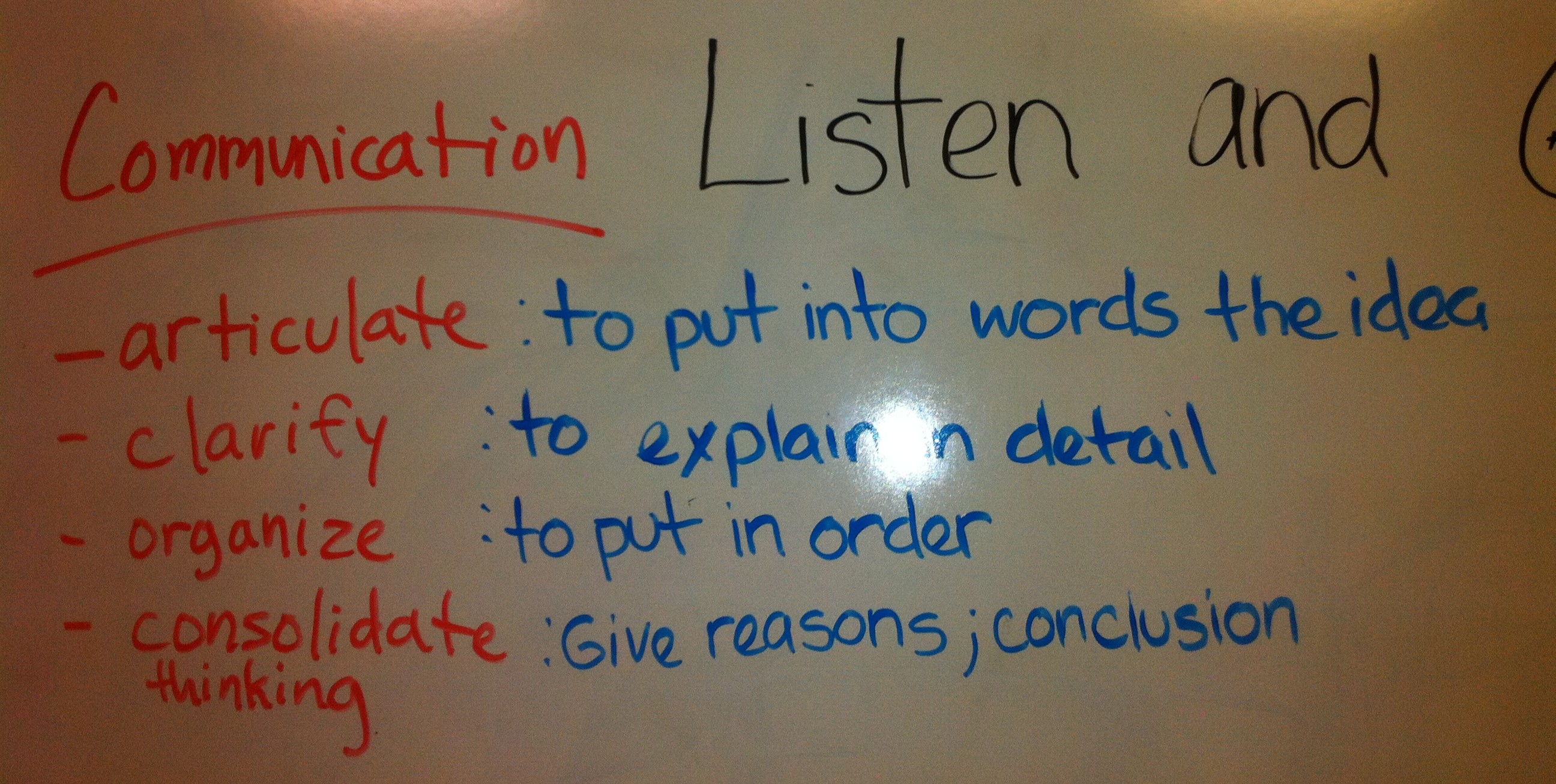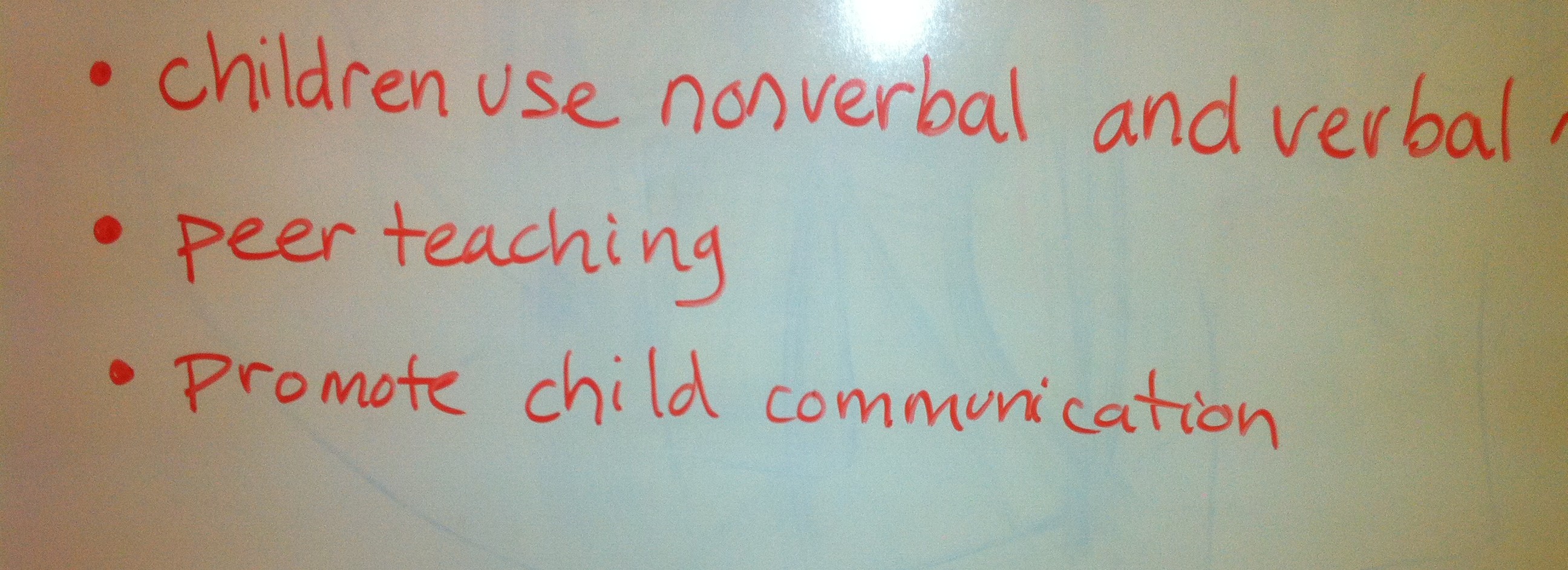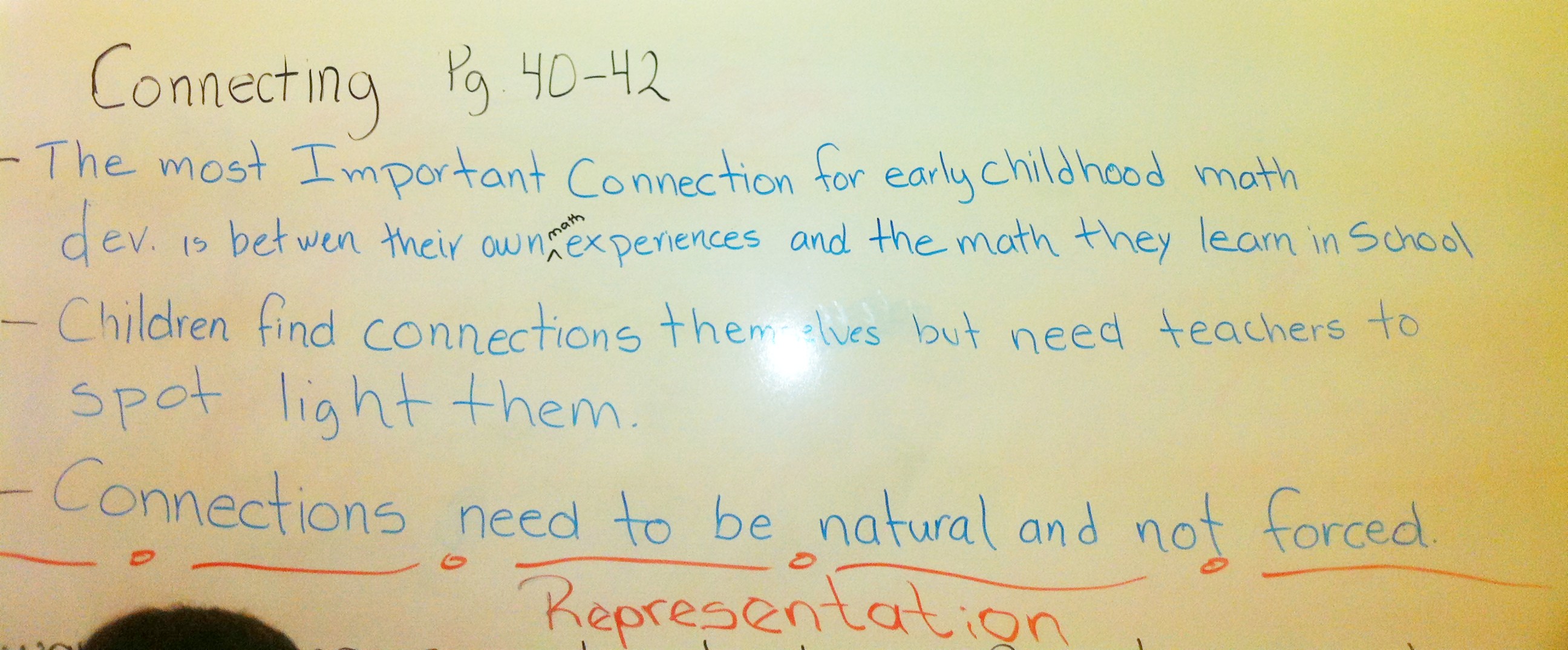Please print out (or have a a copy of) the lesson plan format. We will discuss this in detail, and you will probably want to take notes on a blank lesson plan.
Click images below to view full screen.
Problem Solving
• build new mathematical knowledge through problem solving;
• solve problems that arise in mathematics and in other contexts;
• apply and adapt a variety of appropriate strategies to solve problems;
• monitor and reflect on the process of mathematical problem solving.
Reasoning
• recognize reasoning and proof as fundamental aspects of mathematics;
• make and investigate mathematical conjectures;
• develop and evaluate mathematical arguments and proofs;
• select and use various types of reasoning and methods of proof.
Communication
• organize and consolidate their mathematical thinking through communication;
• communicate their mathematical thinking coherently and clearly to peers, teachers, and others;
• analyze and evaluate the mathematical thinking and strategies of others;
• use the language of mathematics to express mathematical ideas precisely.
Connections
• recognize and use connections among mathematical ideas;
• understand how mathematical ideas interconnect and build on one another to produce a coherent whole;
• recognize and apply mathematics in contexts outside of mathematics.
Representation
• create and use representations to organize, record, and communicate mathematical ideas;
• select, apply, and translate among mathematical representations to solve problems;
• use representations to model and interpret physical, social, and mathematical phenomena.
1. Y.C. – Ch. 2 Principles in Teaching Math
- Principles in Curriculum
- Principles in Instruction
- Principles in Assessment
2. Burns – Ch. 6 and 7: Calculators, Crutch or Tool?
(Activity) 1 person works with calculator, 1 person works without a calculator – discuss implications of using a calculator in specific situations.
3. Y. C. Ch 3: Mathematics Processes in Early Childhood Curriculum. Work in assigned dyads to read about and present one process strand to the class. Highlight key ideas from the chapter:
- Problem Solving (pg. 29 – 33)
- Reasoning (pg. 34 – 38)
- Communication (pg. 38 – 40)
- Connecting (pg. 40 – 42)
- Representing (43 – 45)
As you prepared your presentations, you needed to analyze, explain, identify, and compare aspects of your strand. On Bloom’s Taxonomy, this level of thinking is analysis. Always think of Bloom’s when designing lessons.
4. Journal:
Referring to your understanding of the processing strands, discuss three different ways children may demonstrate their understanding of “Seriation of quantities of three or more.” How will children show that they “know” seriation? (putting three or more things in order?)
For next week’s meeting – print out a copy of the lesson plan format. We will be covering this in depth. It will be to your advantage to write notes on the lesson plan itself as we discuss the format and expectations in class. Print out the Algebra strand from the NCTM standards.
